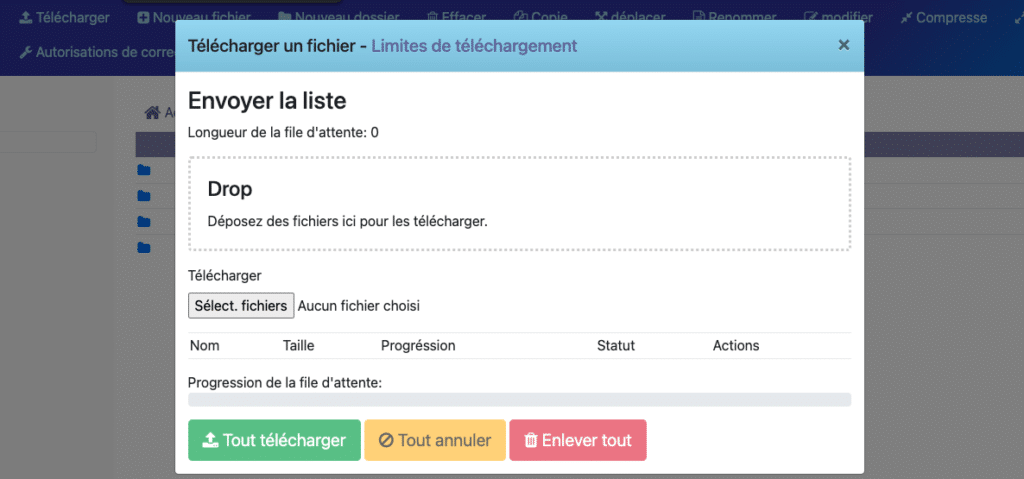BIMI (Brand Indicators for Message Identification) is a recent technology that aims to strengthen the security of email communications and improve the brand image of companies. In this article, we will discover what BIMI is and how it works.
What is BIMI?
BIMI is an email authentication protocol that allows senders to display their logo next to their messages in the recipients’ inbox.
By associating a brand image with emails, BIMI aims to build user confidence. This is to reduce the risk of phishing and to improve recipient engagement with email communications.
How BIMI works
BIMI works by building on existing email authentication protocols, such as DMARC, SPF and DKIM.
Once a sender has properly configured these protocols, they can add a BIMI record to their DNS.
This record contains a link to the company logo in SVG format. The logo will be displayed next to the sender’s emails in the recipients’ inbox.
Email service providers check the BIMI record when they receive an email.
If the registration is valid and the authentication protocols are respected, the sender’s logo will be displayed next to the message, reinforcing the users’ trust and the authenticity of the communications.
The benefits of BIMI for companies
As a result, BIMI has several benefits for businesses, including:
Strengthening the brand
BIMI allows companies to display their logo next to their emails. This strengthens brand recognition and improves visibility with recipients.
Fight against fraud and phishing
By displaying the company logo, BIMI allows recipients to quickly identify genuine emails. This reduces the risk of fraud and phishing.
Improved email deliverability
BIMI relies on strict authentication protocols such as DMARC, SPF and DKIM.
Companies that implement these protocols generally have better email deliverability rates. This ensures that their messages reach the recipients’ inboxes.
Increased customer confidence
Customers are more likely to trust emails from verified senders that display their logo.
This trust can lead to increased open rates, click-through rates and conversions.
Competitive advantage
Companies that adopt BIMI can differentiate themselves from their competitors by demonstrating their commitment to the security and authenticity of email communications.
How to implement BIMI?
To implement BIMI, follow the steps below:
E-mail authentication. Make sure your domain has SPF, DKIM and DMARC email authentication protocols properly configured.
BIMI relies on these protocols to verify the authenticity of emails sent by your domain.
Create an SVG file. Create an SVG file of your company logo. The logo must meet the BIMI guidelines for size, format and content. You can use this tool to convert your logo.
Host the SVG file. Host the SVG file on a publicly accessible web server. Make sure the server supports HTTPS requests.

Generate a BIMI record. Create a BIMI record for your domain as a DNS TXT record.
The record must include the prefix “v=BIMI1;”, followed by the URL of the hosted SVG file.
For example:
default._bimi 3600 IN TXT "v=BIMI1; l=https://exemple.com/logo.svg"Add the BIMI record to your DNS. Add the BIMI record to the DNS configuration of your domain.
The record must be associated with a specific subdomain such as “default._bimi.example.com” where “example.com” is replaced by your own domain.
Read also: Configuring the email server on CyberPanel
The challenges and limitations of BIMI
The challenges and limitations of BIMI include:
Limited adoption. BIMI is still being adopted, and not all messaging service providers support it yet.
This means that the benefits of BIMI may be limited until more vendors integrate this functionality.
Technical configuration. The implementation of BIMI requires a precise technical configuration and management of DNS records.
Companies must ensure they have the technical skills to properly implement BIMI and keep it up to date.
E-mail authentication. BIMI relies on email authentication via SPF, DKIM and DMARC.
If these protocols are not properly configured, BIMI will not work effectively, and emails could be considered spam or fraudulent.
Logo requirements. The corporate logo used in BIMI must meet certain specifications for size, format, and content.
Companies may need to adapt their existing logo to meet these requirements.
Not a guarantee of deliverability. While BIMI can improve recipient confidence and email visibility, it does not guarantee email deliverability.
Companies must continue to monitor and optimize the deliverability of their emails to prevent their messages from being marked as spam or blocked.
Conclusion
In short, BIMI email is a promising technology that allows companies to improve recipient trust and brand visibility in email.
While there are challenges and limitations to consider when implementing BIMI, the potential benefits make it an attractive option for companies looking to optimize their email marketing campaigns.
It is important to become familiar with the technical requirements of BIMI and to regularly monitor email deliverability to make the most of this technology.


